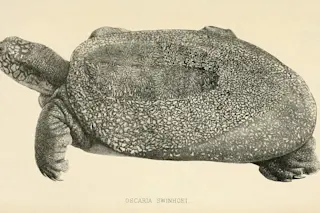(Inside Science) -- After nearly hunting a rare turtle to extinction, hunters are now working with scientists, pooling their collective knowledge to preserve the species.
The Swinhoe's softshell turtle (also known as the Yangtze giant softshell turtle) is the world’s rarest, with just one male in captivity and one other animal of unknown sex known to be living in the wild in Vietnam. Once found throughout the Red River and China’s Yangtze River floodplain, this large freshwater species has plummeted toward extinction in recent decades due to habitat loss, poaching and capture for illegal trade.
Following the death of the last known female in April, the future of this critically endangered species is grim. But carefully documented conversations about the turtles with veteran hunters offer new hope.
“The level of scientific knowledge is far from sufficient in Vietnam and probably explains why this species looks so rare,” said Luca Luiselli, ...














